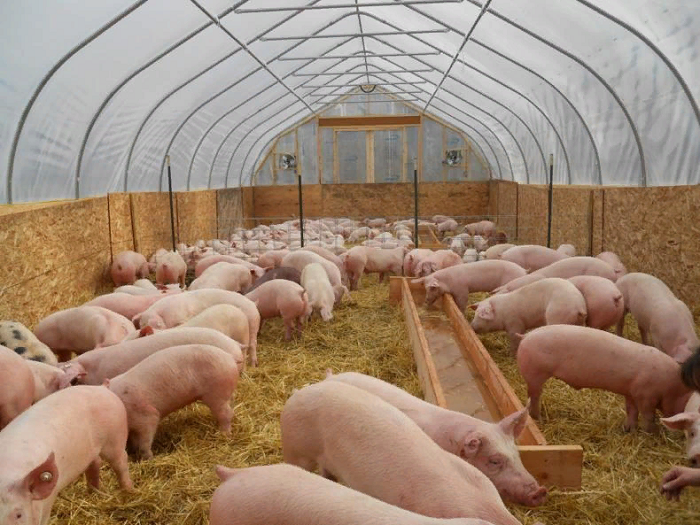
26 Jun The best pigsty projects: what are they?
Each novice farmer, who has decided on what type of livestock activity he is going to do, sets himself the task of designing and building a room in which to keep livestock.
In view of this, pigsty projects should be developed with care, taking into account all the features of this species of animals.
Design features of pigsties
The pigs themselves are very pugnacious, and therefore experts strongly recommend keeping these animals in small groups in fenced compartments. The optimal dimensions of such offices are 2 x 3.5 meters. At the same time, the existing standard for the individual should be taken into account: 0.7m2 for a regular pig, and on a small piglet – 0.07m2.
Such offices are best located on both sides of the building with the possibility of a passage in the middle with a width of about two meters. Projects of pigsties are compiled on the basis that the height of the erected structure will be about three meters. As a rule, in such buildings, the ceiling is made light, because the attic is not recyclable: it is too difficult to protect this floor from “impregnation” with an unpleasant smell that is characteristic of pig sheds.
At the same time, pigs are heat-loving animals, and therefore pigsties must be sufficiently insulated. As a rule, caulked logs or bricks are used for their construction. Without fail, the walls of the pigsty must be built on a solid foundation and sheathed with special wood material, which would prevent the inhabitants of the pigsty from spoiling the walls. In addition, such insulation allows you to contain pigs in optimal habitats for them even in the winter season.
When designing a pigsty, special attention is paid to the floor, because not a single structure of this structure is subject to such intense destruction as the floor. It is believed that the best and cheapest option is a floor made by ramming crushed stone on a hydraulic cement base. Quite often, the so-called “cobblestone pavement” is also used, that is, a brick laid on an edge is poured with cement mortar. But still, the most durable floor for a pigsty, according to experts, is concrete, the layer of which should be 15-18 centimeters.
Often in pigsties in which highly cultivated breeds of animals are grown, the floor is poured with concrete. In no case should the floor in pigsties be made asphalt, because due to the constant ammonia exposure, such a floor will soften very quickly, turning into a soft mess. And the asphalt floor is faster than any other damage, and given the behavioral specifics of pigs, which, if the slightest crack is detected, immediately begin to disperse, you can imagine how quickly it will come into unsuitability.
Moreover, floors made of earth or soft rocks will also be unusable very soon, because the “inhabitants” of the pigsty will quickly figure out the fragility of this coating. In addition, such floor coverings are extremely unhygienic, which means that their use in pigsties is undesirable.
As for wooden slatted floors, the distance between the gratings of which is 2-3 centimeters, they are also not a suitable option for a pigsty for several reasons. Firstly, such flooring is extremely unhygienic: dirt accumulates under it, which provokes the breeding of rodents such as rats. Secondly, such floors cannot protect animals sufficiently from hypothermia.
A completely different matter is a solid wooden floor covering, for example, made of pine or oak. This floor is very warm and extremely comfortable. According to existing standards, the floor in pigs must necessarily rise above the ground by about 20 cm. This is the only way to protect the walls of the building as much as possible from destructive dampness and ammonia exposure. The number of windows in the pigsty should be limited, since an excess of daylight can act excitingly on the inhabitants of the tap.
The purpose of windows in a pig barn is not only for daylight, but also for ventilation. By the way, for proper ventilation in the winter, there should be a special ventilation pipe in the pigsty. Doors in a pigsty must necessarily open outward, and their thresholds must be low. In no case should several doors be placed opposite, as this provokes a draft and can lead to illness in animals.
Design options for pigsties
Like the pigsties themselves, projects can be designed and implemented by the livestock farmer himself or by a specialized company that knows the business. Whichever option is the most acceptable, it is important that this structure takes into account all the features of its inhabitants and satisfies all their needs!



No Comments